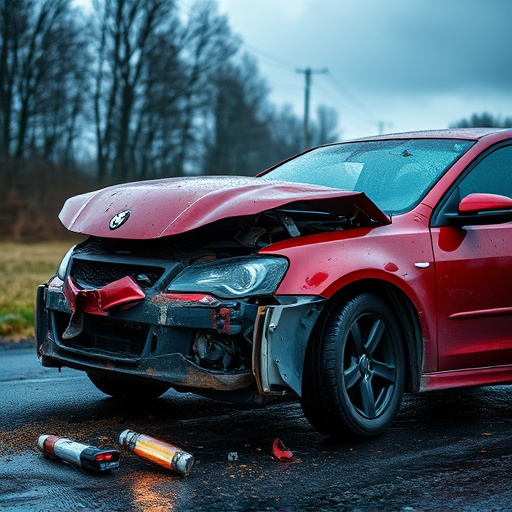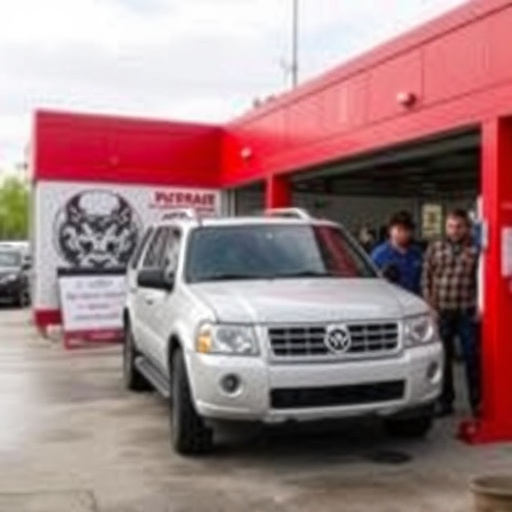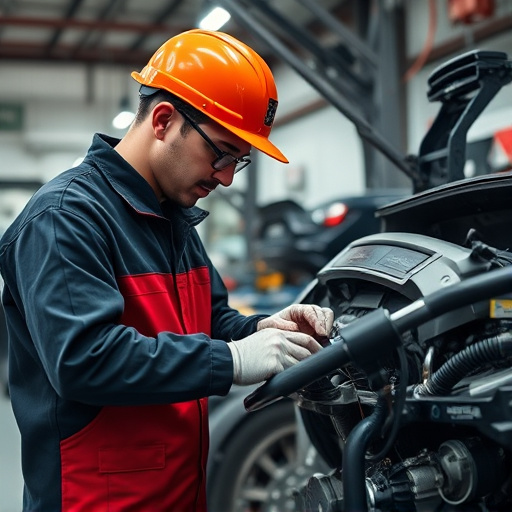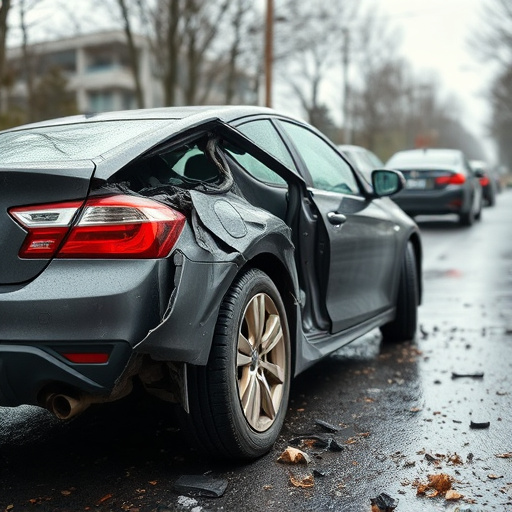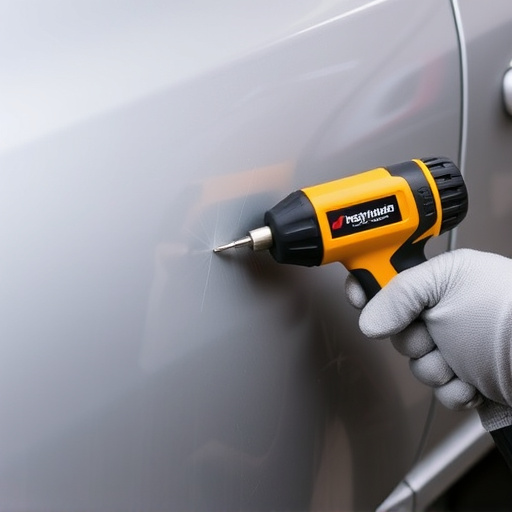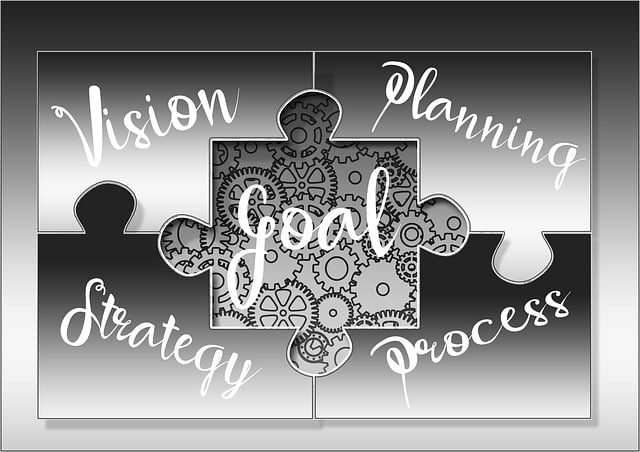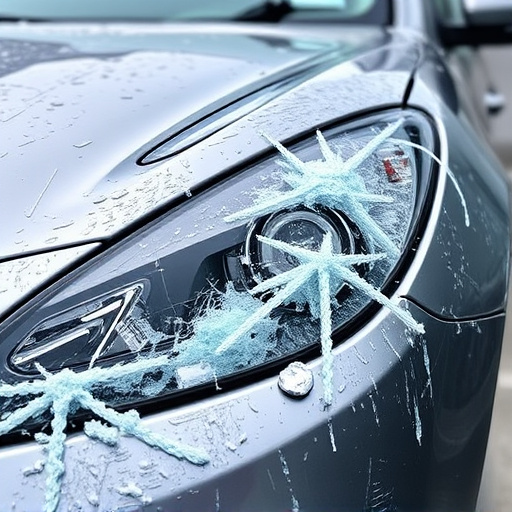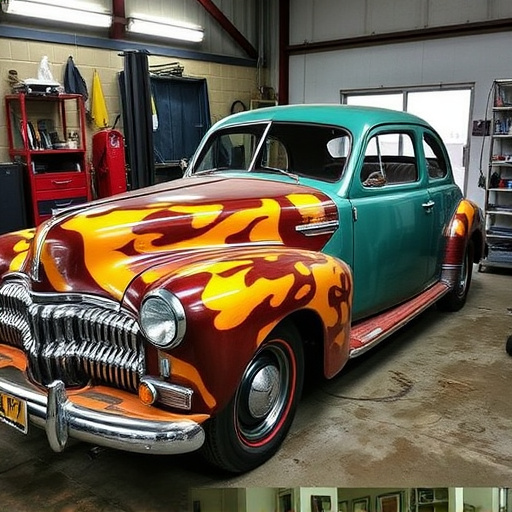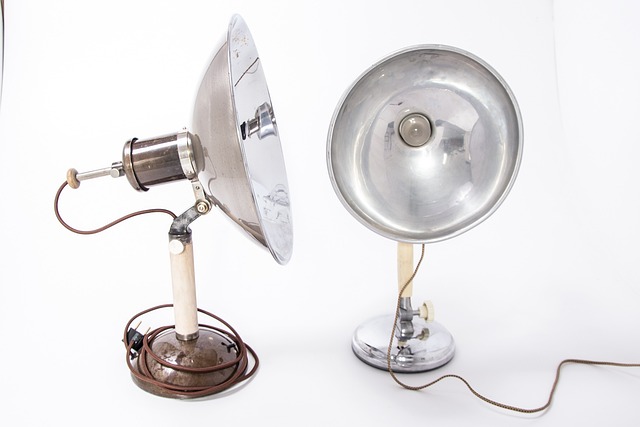Bumper damage, from scuffs to cracks, impacts appearance and safety. Skilled technicians use advanced tools for repair, ensuring aesthetic restoration and retention of critical safety features. Detailed process includes assessment, preparation, filling, sanding, painting, and finishing. Choosing experienced professionals with expertise across vehicle types ensures quality, safety, and seamless integration of repairs with original aesthetics and functionality.
“Bumper damage repair is a common concern for vehicle owners, but it doesn’t have to be a stressful process. Whether your car has sustained minor dents or significant crashes, understanding the repair options available for all vehicle makes and models is key. This comprehensive guide delves into the intricacies of bumper damage, from identifying common causes and types to navigating the repair process step-by-step. Learn how to choose the right technician to ensure quality and safety, restoring your vehicle to its pre-accident condition.”
- Understanding Bumper Damage: Common Causes and Types
- The Repair Process: Step-by-Step Guide for Restoration
- Choosing the Right Technician: Ensuring Quality and Safety
Understanding Bumper Damage: Common Causes and Types

Bumper damage can range from minor scuffs and scratches to severe dents and cracks, impacting both the vehicle’s aesthetics and safety. Common causes include collision with another vehicle, curbs, or objects like shopping carts, parking barriers, or debris on the road. Each type of impact can lead to different levels of damage, from simple paint scratches to more complex structural issues.
Understanding these various forms of bumper damage is crucial when considering auto maintenance. A collision repair center equipped with skilled technicians and advanced tools for car dent removal can effectively address these problems. Whether it’s a small bump or a significant collision, proper bumper damage repair ensures your vehicle not only looks its best but also maintains optimal safety features, enhancing your overall driving experience.
The Repair Process: Step-by-Step Guide for Restoration

Bumper damage repair is a meticulous process that involves several steps to ensure your vehicle’s front or rear bumper looks as good as new. Here’s a simplified guide:
1. Assess the Damage: Begin by thoroughly inspecting the bumper to understand the extent of the damage. This includes identifying cracks, dents, or any other deformities. For severe cases, professional assessment is recommended to determine if replacement is necessary.
2. Preparation: Once the damage is identified, clean the area around the affected bumper. Remove any dirt, debris, or old paint using specialized tools and solutions. Primer is then applied to prepare the surface for new paint, ensuring a smooth base for optimal adhesion.
3. Filling and Sanding: Fill in any dents or holes using automotive body filler. Once dried, carefully sand the area until it’s smooth and even with the rest of the bumper. This step is crucial for achieving a seamless finish during repainting.
4. Painting: Apply new paint over the repaired area, matching it as closely as possible to your vehicle’s original color. Use high-quality auto paints designed for durable outdoor performance. Allow each coat to dry completely before applying another to build up a uniform layer of protection and color.
5. Finishing Touches: After the final coat has dried, inspect the bumper for any imperfections. If needed, touch up any remaining areas with paint or clear coat to achieve a perfect finish. This meticulous care ensures your repaired bumper seamlessly integrates with the rest of your vehicle, enhancing its aesthetic appeal and protective capabilities.
Choosing the Right Technician: Ensuring Quality and Safety

Choosing the right technician for your bumper damage repair is paramount to ensuring quality and safety. When selecting a repair shop, look for professionals with expertise in various vehicle makes and models. Reputable technicians should be well-versed in both traditional and modern car manufacturing techniques, from classic sedans like Mercedes Benz to electric vehicles. This knowledge ensures they can accurately assess and fix any type of bumper damage, from minor dents to severe crashes, while adhering to industry standards and safety protocols.
Additionally, check if the technician or collision center offers comprehensive services, including vehicle paint repair. A skilled paint technician is crucial for restoring your car’s aesthetic appeal after a bumper repair. Reputable shops that specialize in bumper damage repair often have state-of-the-art equipment and use high-quality paints to match your vehicle’s original finish perfectly. This blend of expertise and resources guarantees not only the structural integrity but also the visual perfection of your car, leaving it looking like new after the repair process.
Bumper damage repair is no longer a daunting task, thanks to advanced techniques and knowledgeable technicians. By understanding the common causes and types of bumper damage, following a meticulous repair process, and selecting the right expert for the job, vehicle owners can now restore their bumpers to their original condition efficiently and effectively. Remember, prompt action after an incident can prevent minor dents from becoming significant repairs, saving time and money in the long run. So, if you’re facing bumper damage, take control and opt for professional bumper damage repair services tailored for your vehicle’s make and model.


